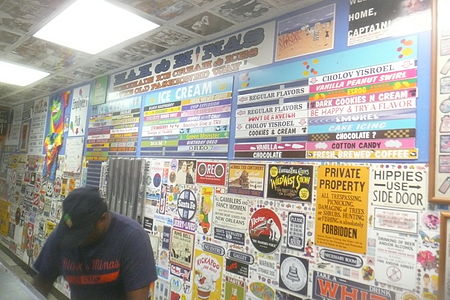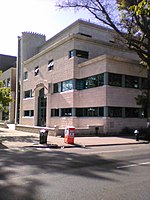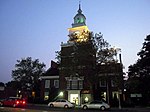Max and Mina's

Max and Mina's is an ice cream store in New York City, opened in 1997. Owned by brothers Bruce and Mark Becker and , it is known for its ever-changing eccentric ice cream flavors, such as Cajun, Lox, Purple Mint Chip, beer, malt, and Isaac Mizrahi. Max and Mina's was named number 1 of the top 10 unique ice cream parlors in America in Everybody Loves Ice Cream, the Whole Scoop on America's favorite treat by Shannos Jackson Arnold, Emmis Books, July 2004. The Travel Channel listed the shop as "one of America's most famous ice cream paradises." Some Manhattan restaurants offer Max & Mina's Ice Cream on their dessert menus. The store has been an answer on Hollywood Squares and in recent versions of Trivial Pursuit.
Excerpt from the Wikipedia article Max and Mina's (License: CC BY-SA 3.0, Authors, Images).Max and Mina's
Main Street, New York Queens
Geographical coordinates (GPS) Address Phone number Website External links Nearby Places Show on map
Geographical coordinates (GPS)
| Latitude | Longitude |
|---|---|
| N 40.727197222222 ° | E -73.822394444444 ° |
Address
Max and Mina's Ice Cream Parlor
Main Street 71-26
11367 New York, Queens
New York, United States
Open on Google Maps








